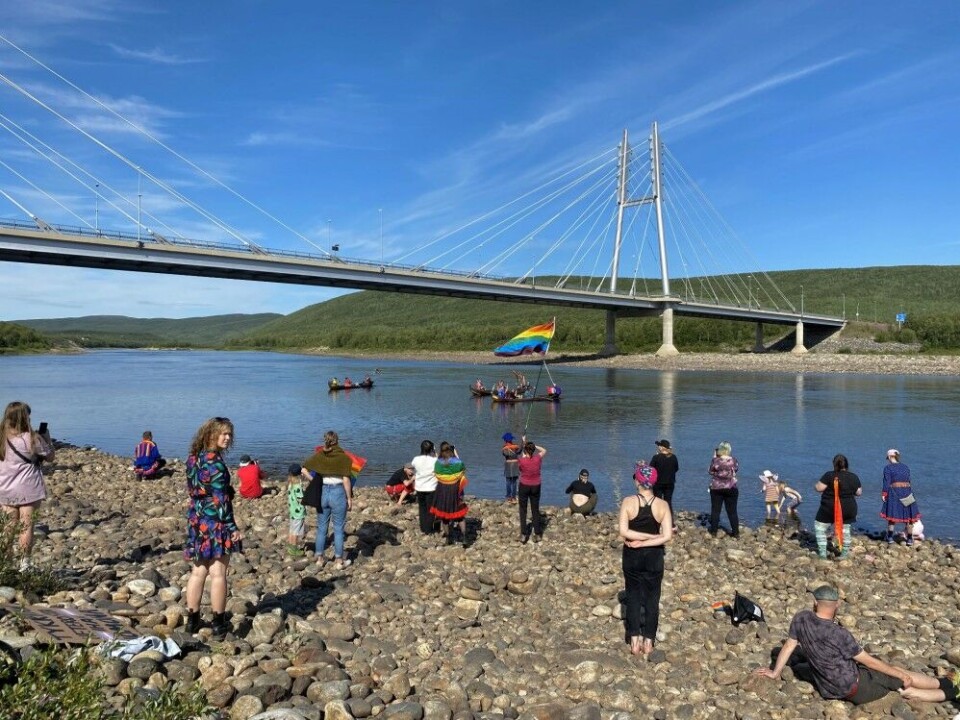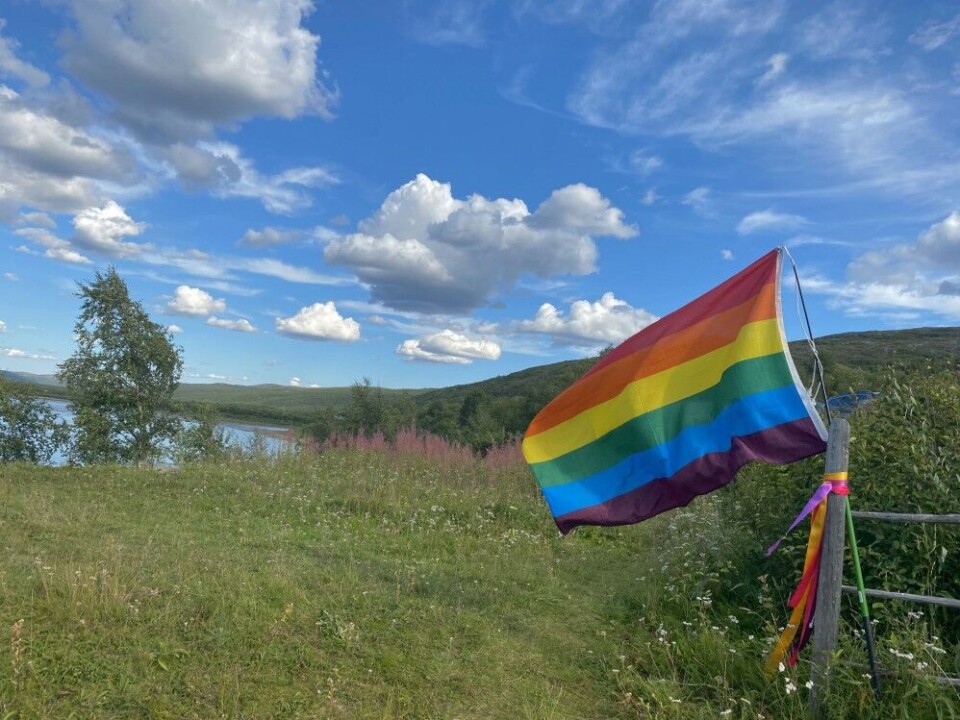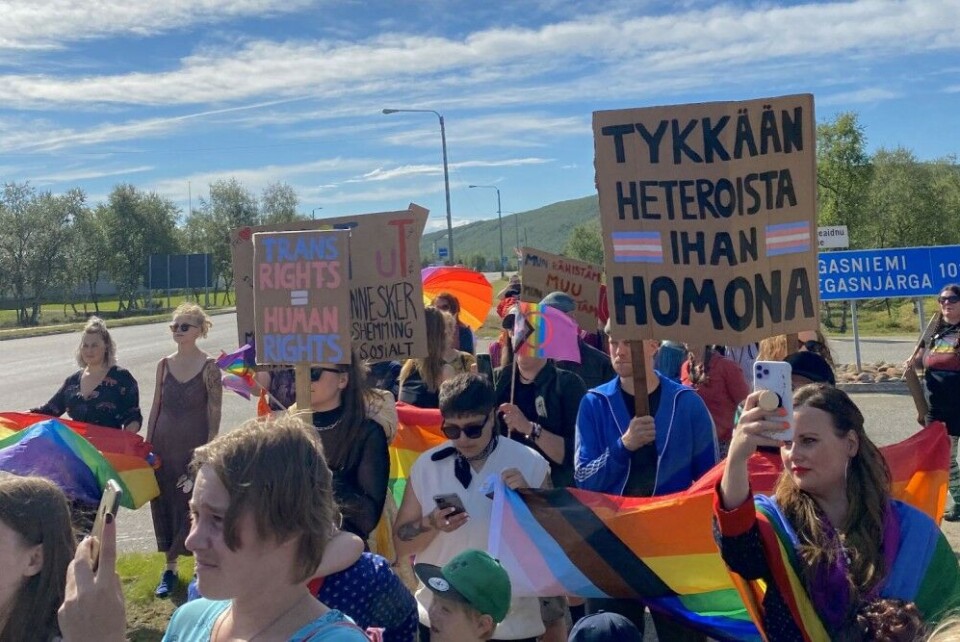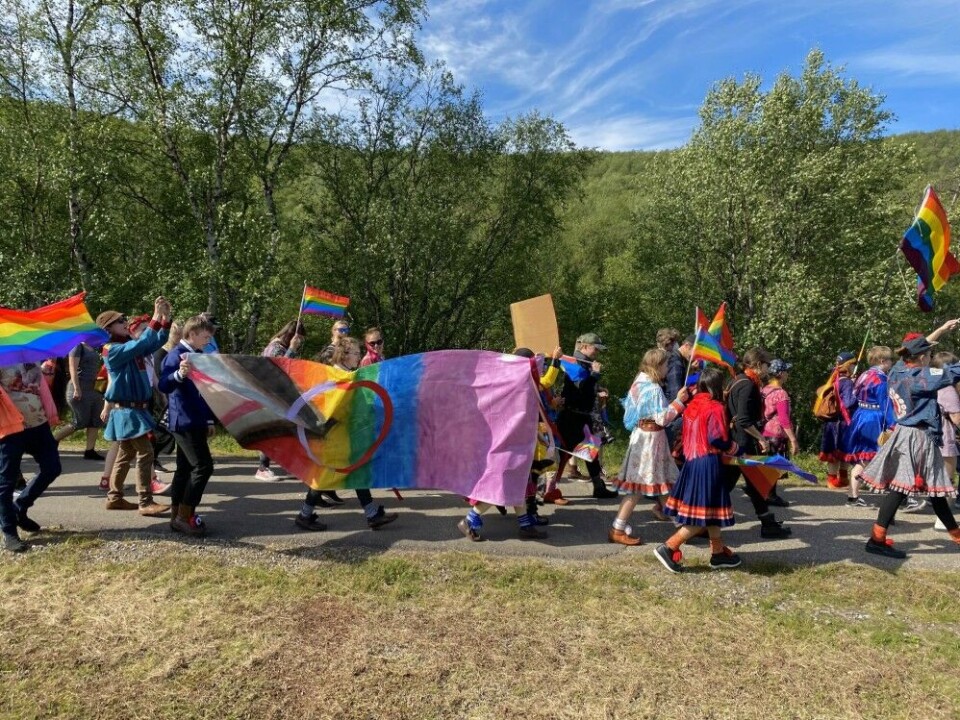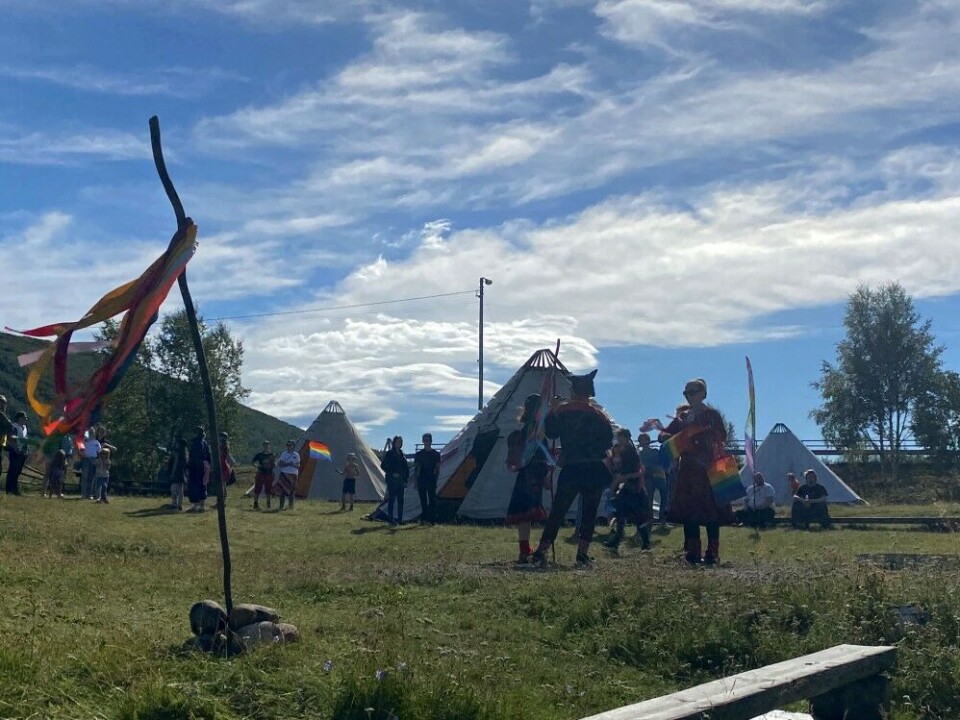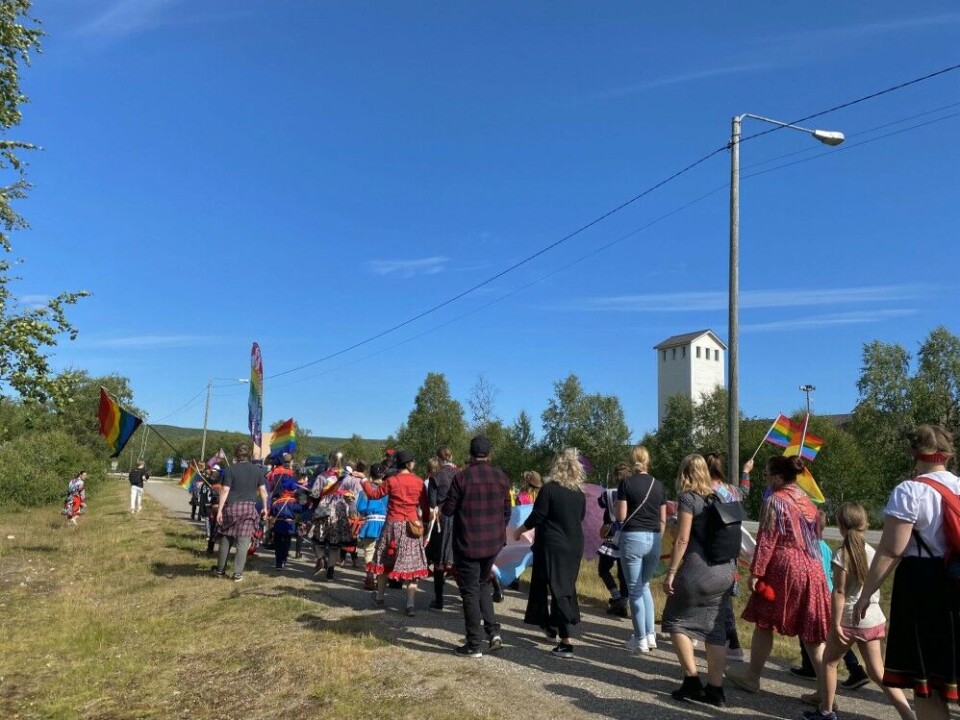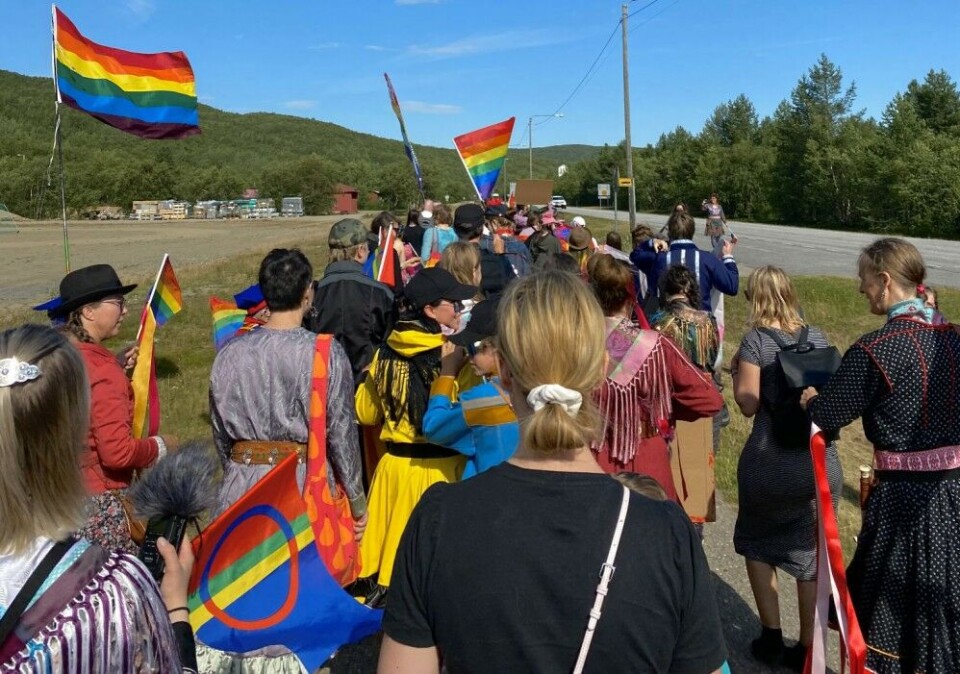Sápmi Pride on closed border
Sápmi Pride has been organised since 2014, and after being postponed for the year 2020, activists and allies were happy to get together in Utsjoki. Sápmi Pride 2021 took place over four days, from the 5th to the 8th August, and held a variety of workshops and, of course, the long anticipated pride march.
Despite the Norwegian government’s decision to restrict travel between Norway and Finland, the festival had a good turn up and enthusiastic attendees. Live streams of the event allowed anyone to take part, even if they could not come to the physical event.
This year’s themes centred around the queer experience in Sápmi and the challenges and opportunities that non-binary people face in the community. For example, the panel discussion on Saturday centred around gendered language used in Sámi languages and how to move towards more gender-neutral vocabulary. In addition, the panelists discussed the use of gákti (Northern Sámi word for the Sámi attire) when a person does not necessarily identify with the traditional gender norms.
The march started from Utsjoki school and moved to a field on the banks of River Teno - attendees were shouting slogans and yoiking the whole way before settling down to listen to panel discussions.

